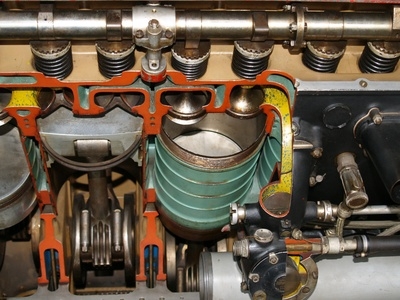
CSFI fuel Injection began with General Motors’ 1992 introduction of “Central Port Injection” (CPI). This system was redesigned and renamed “Central Sequential Fuel Injection” (CSFI) in 1996. CSFI was used on 4.3-liter V6 Vortec engines originally, and on 5.0-liter and 5.7-liter Vortec V8 engines after 1996. In a CSFI system, the injectors open individually, firing just once for every two revolutions of the crankshaft. Residue can gum up the injectors because of this, resulting in rough idling and hard starting. Cleaning or replacement of the poppet valves fixes the problem. If your "Service Engine Soon" message appears and you determine its cause is the CSFI system, test the CSFI and perform the maintenance if necessary. You don't have to pay a pro mechanic to do it if you know what to do.
Test the fuel flow. The fuel pressure should not be less than the "Key On-Engine Off" (KOEO) specification. If it is less, test the fuel pump and voltage supply circuit. Pressure from the fuel pump should be 70 to 80 psi or higher. The pump should also output a quart of fuel in 30 seconds.
Check fuel pump voltage and ground connections. Battery voltage at the pump when the key is in KOEO position should ideally drop by no more than 0.5 volts. No voltage means there is either a blown fuse, an open in the pump circuit wiring, or a bad fuel pump relay. If the relay isn’t closing, check the oil pressure switch.
Check the fuel pressure regulator. After the key is turned off, the fuel line pressure should hold for at least five minutes.
Check the individual injectors and the poppet valves. The CSFI injectors should buzz from electrical current. Use a noid light to see if the injectors pulsate, or test voltage with an ohmmeter. On CSFI systems, injector coil voltage should be 5.4 to 7.5 volts.
Monitor the airflow sensor with a scan tool. Fuel pressure in the CSFI system is 60 to 66 psi with KOEO; the operating pressure maintains at 55 to 57 psi. The poppet valves in the spray nozzles should open at about 40 psi. Clean the sensors by spraying the sensor element with electronics cleaner (use only electronics cleaner; any other type of cleaner or solvent can damage the sensor).
Replace the fuel sensor. This is the best option if the fuel sensor still misfires following cleaning.